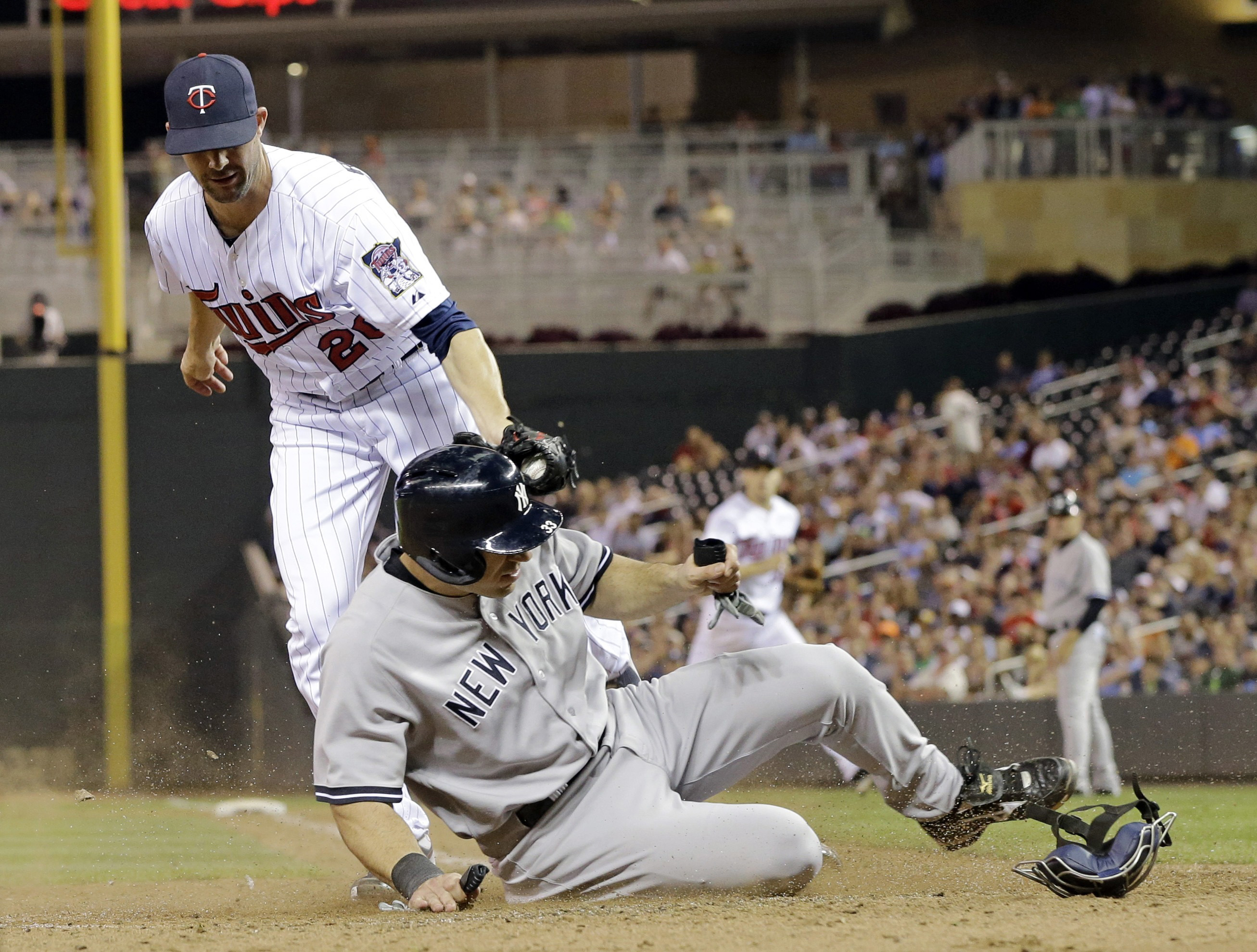
Under gorgeous skies last evening, 29,619 fans showed up at Target Field to watch a fairly bad ballclub play a fairly mediocre one. That’s pretty impressive unless you’re a sportswriter who gets into the games free.
29,619. For the Yankees. On the nicest night in Minneapolis history. Twins fans officially don't give a damn.
— Patrick Reusse (@1500ESPN_Reusse) July 2, 2013
Sports fans, most of whom work for a living, are unfairly targeted when times get tough. Last night’s tweet from Patrick Reusse is a perfect example, given that it suggests (a) Fans have an obligation to support a franchise with their hard-earned cash even when the product is substandard and (b) The 29,619 fans who showed up were little more than chum.
It shouldn’t come as any surprise that fewer fans are showing up these days at Target Field. If the history of other new stadiums is any indication, the novelty of a new stadium is good for about three years. After that, team performance matters.
But Minnesota fans hardly deserve scorn. The team ranks 11th in attendance percentage this year (averaging only 1,000 more than Monday night’s crowd), just three positions lower than the vaunted Yankees. Think about that. Five million people live in the entire state of Minnesota; 8 million people live in New York City alone, yet the Twins are able to draw only 9,000 fewer fans on average than the Yankees.
Other than the Chicago Cubs, no other team ahead of Minnesota in the attendance rank has fewer wins than the Twins. But 22 other teams have better records. Yet the fans show up.
That’s despite a growing trend in professional sports to soak as much money from the fans as possible based on the reputation — if not the actual talent — of the team the Twins are playing.
A “Skyline Deck” ticket to tonight’s Yankees-Twins game will run you $47. The same ticket for the next Twins’ homestand against the Cleveland Indians, however, will cost $41. The Indians are in first place. The Yankees decidedly are not. Why the difference? Under premium pricing, the more popular teams are priced higher. If you raise the price of something, fewer people will buy it. That’s economics. We just socked it to smokers in Minnesota on that theory.
Thanks to Ruth, Gehrig, Winfield, Nettles, Jeter, and — unfortunately – ARod, the Yankees apparently merit a high cost to watch even though their present lineup, while enough to beat the Twins, isn’t particularly watchable. Just ask Zach Schonbrun of the New York Times, who writes today:
Through 41 home games this season, the Yankees have drawn nearly 106,000 fewer fans than at this point a year ago, a 6.1 percent drop that is almost twice as large as the overall decline in baseball. More than half a dozen other teams have had bigger attendance losses than the Yankees, but without exception they are teams that went from good to bad, at least for a while, or from bad to worse, or that play in cities without a notably intense fan base.
And it’s true that Minnesota’s attendance drop is 9 percent from last year. But to their credit, the Twins didn’t sugarcoat what this season was going to be like. The team was going to be bad this year — really bad. And yet the fans are showing up at Target Field in numbers higher than most other cities in Major League Baseball, even though the average ticket price is a dollar higher than the year Target Field opened.
On this date that year, the Twins were 44-36, and in first place by a game over the Tigers. A year ago on this date, they were dead last, a franchise in clear decline.
Of the 30 Major League franchises, however, Minnesota ranks 13th in the Fan Cost Index, which “comprises the prices of four adult average-price tickets, two small draft beers, four small soft drinks, four regular-size hot dogs, parking for one car, two game programs and two least expensive, adult-size adjustable caps.” That’s $221.36 for Target Field fans, just $4 less than a year ago.
And yet, Twins fans still show up. Good for them.
